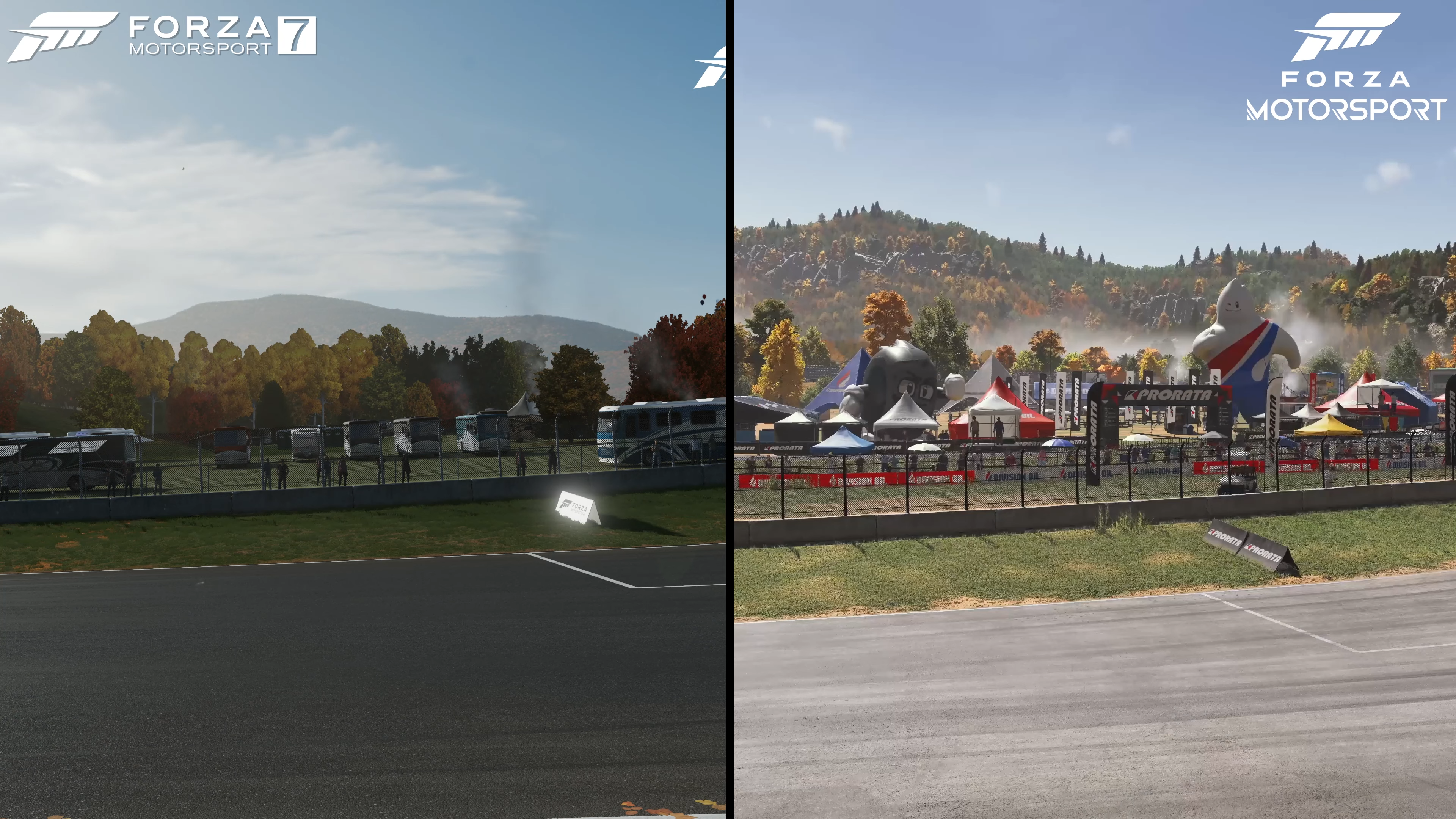Nearly five years after the last series entry, we finally have some concrete information about the new Forza Motorsport coming next year. While the eighth game in the series drops the number from its title, the presentation was all about numbers: 4K resolution and 60fps with real-time ray tracing, double the frame-rate that was shown in the 2020 teaser. Running games at 4K 60fps with RT is a tall order even for high-end PCs, so how can this be possible on Xbox Series X?
To find out, we took a look at the two teaser trailers released so far – which, according to Microsoft’s blog, were shot on PC but ‘also tested on Xbox Series X for the same visual quality output’ – curious.
Analysing the footage reveals a few tell-tale signs of optimisations designed to deliver the GPU headroom to make RT possible in-game – starting with resolution and image quality. Prior Forza Motorsport titles have targeted native resolutions with 4x MSAA, but the new trailers show aliased geometric edges that aren’t consistent with multi-sampling. That suggests that we may be looking at a cheaper anti-aliasing technique. Similarly, the game doesn’t appear to be targeting a native 4K, with pixel counts resolving to 1080p in some scenes but 4K in others. There are also instances where recently revealed objects on screen have a telltale pattern of pixels on them. These signs could be explained by some level of image reconstruction, variable rate shading (VRS), or perhaps TAA.
These techniques make 4K 60fps with RT a more realistic target, but perhaps that 4K ought to have an asterisk next to it. This is nothing new for the console space, but it’s definitely a novel approach for Turn 10 and Forza Motorsport.
The trailers also hint towards some of the settings that the developers could be using to make real-time ray tracing more affordable. I suspect that the Turn 10 team may have chosen a specific type of RT reflection to keep computational costs down – namely, using coherent mirror-like reflections rather than more subtle and realistic glossy reflections. This has an outsized impact on performance – in testing the game Ghost Runner on PC, I found that using mirror-like rather than glossy reflections saves 10ms on an RDNA2 graphics card. That’s 60 percent of the frame-time of a 60fps game – a massive amount. There’s evidence of this RT setting being used in the five-minute trailer, where materials exhibit either shiny, mirror-like reflections or no reflections at all.
Interestingly though, the other trailer – the one-minute sizzle reel – looks quite different. It boasts a lot of diffuse reflections, which Turn 10 recently confirmed is the result of ray-traced global illumination (and evidently better-quality RT reflections) in replays, the garage and photo mode. That’s great from a technological standpoint, but labelling it as ‘in-game 4K footage’ when we’re talking about replay cameras feels a little off in terms of transparency to the audience, especially when the other trailer which is based on gameplay fidelity shows no RTGI and less impressive reflections while being labelled in the same way. It also raises the question of the PC version – will those with sufficiently powerful rigs be able to enable RT GI and higher-quality RT reflections in proper gameplay as well? Hopefully we don’t see an arbitrary restriction here, but that is what we saw in Forza Horizon 5, which disabled RT in-game – even if you have the hardware to cope with the extra GPU load.



Beyond the strategies to make 4K 60fps with RT possible, the demo also showcases changes to Forza that look to take advantage of the newer hardware found on PC and Xbox Series consoles. One big change is a dynamic time of day system, which requires the game to be re-lit in real time – something that would have been a massive performance sink on earlier consoles. Similarly, there’s a big boost to trackside detail, with more spectators, objects and even proper 3D trees with individual branches and real-time self-shadows. Zooming in to a shot of a road with cones reveals upgrades to the shading model, which exhibits much more material variation. While road and cone had a similar texture in FM7, each is shaded differently now, and the cone’s plastic even includes a simulation of subsurface scattering; the thinner areas of the plastic let light through. Given detail differences like this, I am very curious about how other aspects of the game are detailed and shaded up-close, like crowds or pit crews.
It’s clear that there are clear and meaningful upgrades to image quality here that befit a 2023 tentpole release, alongside clever optimisations that make 4K 60fps with RT reflections conceivable for PC and consoles.
However, a few questions remain regarding the Xbox Series version of the game – does it exhibit similar image quality and performance to the PC version, or are greater compromises required? Similarly, the Xbox Series S version is specifically described as featuring real-time RT, so what does that look like and how does it run? It’ll be fascinating to see those questions answered as we learn more about the game.
Be the first to comment